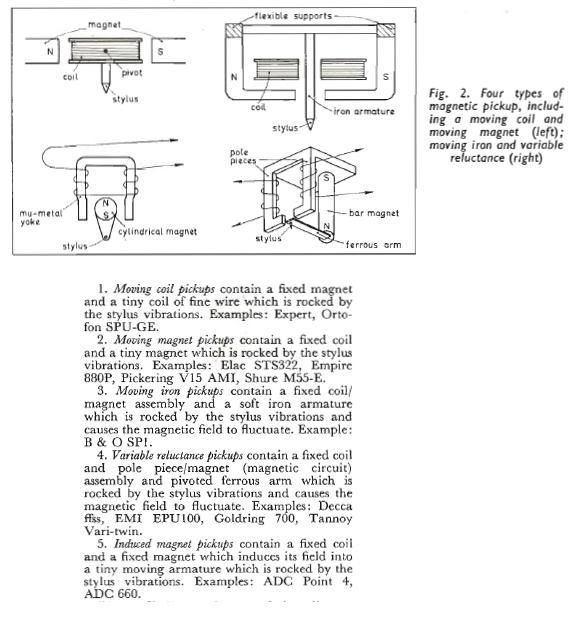Early in my audio sales journey I had the pleasure of meeting Peter Pritchard as he was launching the Sonus line of cartridges. Peter gave us a brief curriculum vitae tracing his work at GE Labs where he was on the team that developed the “variable reluctance” principle for phono cartridges…another name of MI. He left GE to found ADC in Connecticut where he adapted his ideas for stereo and reconfigured the VR arrangement with a patentable tubular soft iron generator, which he dubbed “induced magnet”. He also created a highly compliant suspension and relatively short cantilever…the ultimate expression being the XLM series. How Sonus materially differed from those is a mystery to me. His sale of ADC to BSR may have contained language allowing him to compete with them using his IP…I don’t know. But I do know that for a few years, the Sonus Blue Label and ADC ZLM were at the pinnacle of the MI cartridge world.
Grade Master3 cartridge--Moving Iron Design
Posting this because I just bought my first Grado cartridge since my entry level MM decades ago.I chose the Master3 because it was highly rated and I was intrigued by the Jarrah Wood, boron cantilever and the nude elliptical stylus at a $1,000.00 price point. It's not the most expensive cartridge I have mounted on my VPI Signature table, but it has an excellent balance. Have run it about 20 hours now and it has settled in.
My question is the moving iron system is an excellent design and why haven't more manufacturers seen fit to utilize it?
- ...
- 16 posts total
@bdp24 Glad to hear of the option for a line contact stylus with the Maroon. I lived happily with my Reference and Jubilee until I had to send my Reference back to John Wright for a rebuild. Learning that he was about to retire I started to explore other options hoping to find an MI cartridge that would sound like the Decca. I was surprised to find the MP-500 came closest. The Soundsmith cartridges I have are similar but praiseworthy for their own merits. The Grado Statement3 is the least like a Decca, to my ear. I have never heard a Pickering or a Stanton. Nor any of the other now defunct MI cartridges. |
Pickering is listed in the legend to your figure after point #2, as an example of "moving magnet". As I am sure you know, Pickering and Stanton were associated with each other. Most models of Pickering have a corresponding model among Stanton cartridges. Both companies marketed a low output MM, the Stanton 980LZS (also the 981 variant) and the Pickering XVS7500. These have a much lower inductance and internal R than do the typical high output MMs from anywhere. It IS interesting so see illustrated the differences among MI, variable reluctance, and induced magnet (IM) types. We usually don't bother to make a distinction among types 3, 4, and 5. For example, in this thread several refer to Decca as MI. |
- 16 posts total


